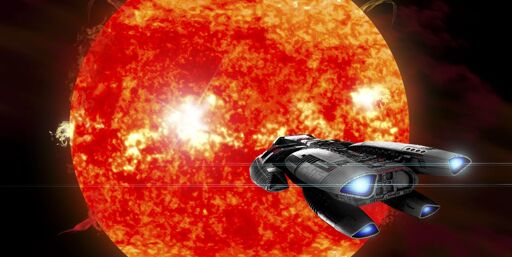No you won’t.
C’mon they have a video showing it! It has to be real!!!
cutting it in half… would still require a long fuckin time
For example, when New Horizons launched back in 2006, it took the spacecraft 9.5 years to finally reach Pluto. Pulsar Fusion claims that it could cut that travel time in half.
Yeah, this is a looong way off from a 1G burn all the way.
edit: 4.5 years to pluto is about the equivalent of a 0.001G burn all the way using this to calculate
Article is capped at 18 views/day so can’t see numbers.
But theoretical cap of energy would be something like E_kin = (\gamma -1)mc². Without knowing anything about the mission or engine, a 50 kg probe at a velocity of .9 c means an energy requirement of about 1,0e19 J.
Fusion of H2 to H3 yields about 340e9 J/g meaning we need about 3 million kg of fuel at 100% conversion rate, or a third if we manage He3 reaction.
Realistically heating, engine efficiency, deceleration, vibrational damping and such would probably lower efficiency to at most 40% and we end up at 8 million kg of fuel to propel a 50 kg payload (not counting the fuel mass).
Seems unfeasible.
Edit as @i_have_no_enemies@lemmy.world kindly provided an alternative link.
Article only says doubly efficient, and H2 to He3 reaction.
To get to .9c we still need a couple million kg of fuel.
Even .1c needs about 40 000 kg of fuel, which is doable, but probably unfeasible.
0,05c should be in kgs range, and is probably plenty (100 km/s).
Still blocked, but thank you
This worked, thank you.
Article only says doubly efficient, and H2 to He3 reaction.
To get to .9c we still need a couple million kg of fuel.
Even .1c needs about 40 000 kg of fuel, which is doable, but probably unfeasible.
I’m a little skeptical about the “10 years of absolute secrecy”… It sounds a lot like “we can’t tell you how it works, just trust us bro.”
It is pretty close to the first of April.
Ship gets lighter as more fuel is destroyed. Ship gets heavier as it gets closer to light speed.
At 90% of light speed, the ship’s mass would be around 2.3x its rest mass.
I haven’t looked at your calculations in detail, but you seem to be missing that important point!
the mass increase due to relativistic effects is really really small, significantly smaller than the weight loss due to fuel consumption, which btw is described by the Rocket Equation.
Will we, though?





